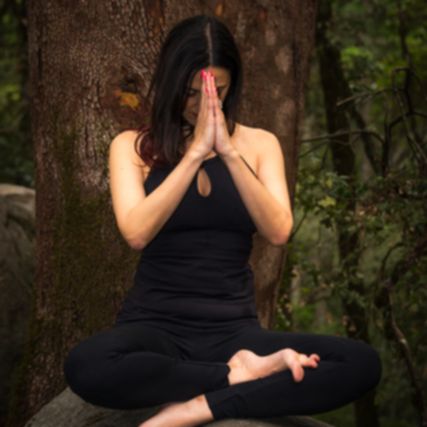Many people recognize the term tai chi or see it practiced in parks, but fewer recognize qigong. I often get quizzical looks when I introduce the word. The term comes from two roots: qi, which often translates to vital or life energy, and gong, which means craft or skill. Unlike tai chi, traditionally a martial arts form, qigong has always been practiced for improved physical, emotional, and mental vitality. Qigong practices combine posture, breath, and intention to improve health, longevity, and spiritual growth. In fact, Daoist practitioners have utilized qigong for thousands of years to improve their health and sense of well-being. Rooted in Chinese medicinal principles, practicing qigong helps cultivate self-healing.
Reason #1: Qigong balances energy.
As an integral component of my self-care, qigong aids me in finding internal awareness and systemic balance of my own vital energy – my qi. As a relatively stiff person, I regularly struggle with a sensation of feeling stuck, which, in this context, means movement itself feels painful. Yet, there also exists an emotional and mental component to it. I’m not sure where to go; I feel inert. I want to get moving and do things, but I somehow need to move past this sensation of tightness and find the inertia I need to move forward with my day.
In Chinese medicinal thought, the joints are where qi often gets stagnant, and the type of constrictions I describe often physically manifest in the joints and their surrounding tissues. Qigong exercises focus on opening the joints, as well as maintaining or increasing mobility. A practice typically begins with warmups that investigate all the major joints in the body, and these exercises then serve to lubricate them.
Reason #2: Qigong helps cultivate awareness.
The simple, gentle, and integrated exercises practiced in qigong allow me to cultivate awareness of the stagnant places in my body and slowly find circulation, release, and relief. Similar to the yogic tradition, many of the postures invite anyone to move like an animal to help gain a different perspective. Stepping outside of the human paradigm and attempting to embody the movement of a bird, or even a dragon, creates a playful environment in which to better understand myself.
Reason #3: Qigong stimulates the imagination.
Besides inviting creativity via movement in the body, qigong also uses visualization as a tool. Throughout my life, I have cultivated a special place in my heart for the visual arts and I feel especially captivated and moved by color. Qigong visualization and meditation techniques help stimulate my imagination, guide me to clear stagnation away, nourish depleted parts, or find balance by utilizing color as a vehicle. Qi flow can be guided by breath and intention as well as by movement and posture. Vitality can be brought into the body by working with the breath and drawing energy from nature. Depending on the intention, the part of the body, or the emotion with which the individual is attempting to work, one can imagine imbibing of a particular color of energy.
Reason #4: Qigong connects us with nature.
The colors in qigong exercises draw from nature. Earth energy, for example, is commonly described as gold. Inspiration for the color can stem from anything in nature a person can imagine as gold: the petals of sunflowers or the dried grasses on northern California hills in summer and fall, perhaps. Spending time in nature has always soothed my system, and walking outdoors brings a sense of comfort upon which I consistently rely. When it comes to colors in nature, qigong exercises help bring utility to all the images I have compiled over the years. The practice invites me to utilize the essence of those ideas in the past to help my well-being in the present. Such a practice encourages and cultivates a sense of interconnectivity between myself and my environment. Some of the best qigong practices I experience happen outside. My qigong practice encourages me to realize how the surrounding environment always supports me, such that to protect the environment means to heal myself.

















2 replies on “4 Reasons Why I Love Practicing Qigong”
Great energy and thanks for sharing!
Great article, Lindsey! Thank you!